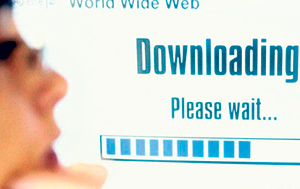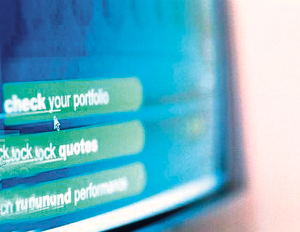
A new saga for e-booksA new chapter is unfolding in the saga of the long awaited e-book, making a fresh bid to deliver on the promises and hype made in its infant years. Giants like Adobe have been busy throwing their mighty weight behind new e-book formats, while Amazon plans to unveil an e-book reader called Kindle.
Google has already built up a massive archive of digitised books that it plans to make accessible to surfers and a price and Sony has joined in with portable e-book readers of its own. Perhaps someone felt that it was too good an idea to rust away without making a bit of money from it, because none of the systems mentioned above are compatible with each other – which is one of the main reasons e-books never became as popular as they were hyped up to be nearly a decade ago. To dwell on the profit-oriented behaviour of e-book developers and device manufacturers, and hark the fact that publishers have been 'dinosaurs' in their fear of new technology rather than adopting it, or even the gross over pricing of e-books, would be to get lost in the overly complex analysis of a simple problem. Portable CD music players were popular because they were a huge improvement from portable cassette players in terms of quality, power consumption and most importantly the number of songs they could carry. Yet it was whipped out into extinction overnight by the iPod which was not only ultra portable but improved tremendously on the CD players weaknesses – even getting rid of the need to change CDs on the go. E-book readers on the other hand, are seeking to compete with – if not replace, a product that has remained virtually unchanged for millennia. The look and feel of books has not changed in a thousand years – simply because they have reached perfection. To be fair, e-readers offer enormous storage capacity, search and navigation, and is consequently well suited for reference books, encyclopaedias and mixed media.
On the other hand, paper books are universally compatible, never needs batteries of re-charging and offer the intangible romance and intimate connection that only the rhythmic flipping of pages and the gradual swelling of pages on the left hand and diminishing thickness of pages on the right hand can entice in their readers. In that sense, the e-reader not only seeks to solve a problem that does not exist, but buy itself will cause more problems than it can ever hope to solve. Make no mistake; e-books and e-readers are here to stay and will soon gulp down a tangible portion of the publishing industry, but those who await the demise of the hardcover and the paperback will not live long enough to see their prophesies fulfilled. Write into technopage@gmail.com and share your thoughts. Improve your computer literacy Micro-electromechanical systems MEMS, or micro-electromechanical systems, is the name of a micro fabrication technology used in making systems-on-a-chip (SoC) that embeds mechanical devices such as fluid sensors, mirrors, actuators, pressure and temperature sensors, vibration sensors and valves in semiconductor chips. MEMS combine many disciplines, including physics, bioinformatics, biochemistry, electrical engineering, optics and electronics. Typical MEMS devices combine sensing, processing and/or actuating functions to alter the way that the physical world is perceived and controlled. They typically combine two or more electrical, mechanical, biological, magnetic, optical or chemical properties on a single microchip. MEMS devices are already used in such fields as the automotive industry, where they are incorporated into airbag and vehicle control; medicine, where they are used to control medication dosing and control medical devices such as pacemakers; and construction, where they are used in building materials that can sense changes in environmental stresses. In a MEMS system, the integrated circuits (ICs) are considered the thinking part of the system while MEMS provides active perception and control functions. MEMS devices are divided into two different categories: microsensors that detect information and actuators that respond to information.
MEMS are sometimes referred to as microsystems, abbreviated MST. Oracle Last week, Bill Gates walked onstage for what is likely to be his last keynote address as a full-time Microsoft employee. His soon-to-be diminished role in Microsoft however doesn't mean he's about to stop predicting the future. During his address to a packed crowd of thousands, Gates lay to rest what he called the "first digital decade" and laid out his vision for the next decade. Gates predicted that the next ten years will be characterized by high-definition everywhere, constant connection to one another and the Internet, and the onset of more natural user interfaces like gestures and visual recognition. "This is just the beginning," he said. "The trend here is clear. All media and entertainment will be software driven. The second digital decade will be more focused on connecting people. It will be more focused on being user-centric." A Microsoft Research-developed visual recognition technology demonstrated during the keynote represents perhaps Microsoft's best example of this vision. The phone software, which Gates said would someday be included in Windows Mobile devices, recognizes people, for example telling Gates that his co-star on stage, Robbie Bach, president of Microsoft's entertainment and devices division, owed Gates $20. Pointing the device at a theatre allowed Gates to buy a ticket to a show, and the phone used a three-dimensional visualization to guide Gates toward a restaurant where he had reservations. |
|| Front
Page | News | Editorial | Columns | Sports | Plus | Financial
Times | International | Mirror | TV
Times | Funday
Times || |
| |
Reproduction of articles permitted when used without any alterations to contents and the source. |
© Copyright
2008 | Wijeya
Newspapers Ltd.Colombo. Sri Lanka. All Rights Reserved. |

